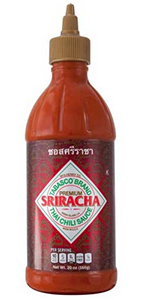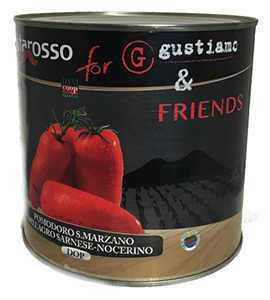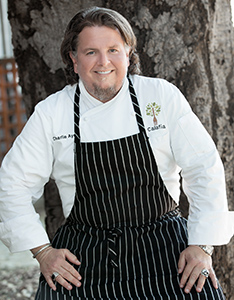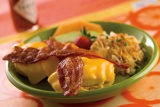Guest Speaker: 3 Basics to Harnessing Restaurant Big Data
 Say a menu item doesn’t sell. Is it overpriced, poorly described, not satisfying to the customer or a combination of these? To understand the basics of restaurant-performance management systems, here are three key teachings that would be part of any 101-level course on the topic.
Say a menu item doesn’t sell. Is it overpriced, poorly described, not satisfying to the customer or a combination of these? To understand the basics of restaurant-performance management systems, here are three key teachings that would be part of any 101-level course on the topic.
By Dave Bennett
In the restaurant business, competition is fierce and plenty. Owners use various types of operational strategies to stay ahead of the curve and keep profits streaming in. Measuring restaurant performance is a critical ongoing activity—to see how operations are going today, and to reveal opportunities to improve customer satisfaction and unit profitability in the future.
Strong restaurant performance-measurement systems require vast amounts of data. Your data tells you how things are going, and you, in turn, use that data to make decisions. For instance, let’s imagine that your data is telling you that customers aren’t ordering a certain menu item. Is it overpriced? How does it taste? How is it described on the menu? Armed with that knowledge, you can decide how to respond: Remove that item from the menu, which will also streamline your inventory; offer it as a limited-time offering with a new menu description; or lower its selling price to see if that boosts sales.

 Serving a term of 18 months, Carroll is joined by John Sloane of Macau as vice president of the global organization serving 10 million chefs from more than 105 nations.
Serving a term of 18 months, Carroll is joined by John Sloane of Macau as vice president of the global organization serving 10 million chefs from more than 105 nations. Hot sauce is becoming ubiquitous in homes and at foodservice outlets, according to recent NPD Group research. And while the classic Louisiana type still rules, it’s by far not the only hot seller, evidenced by spreading-like-wildfire sales of fruity habanero and chipotle varieties.
Hot sauce is becoming ubiquitous in homes and at foodservice outlets, according to recent NPD Group research. And while the classic Louisiana type still rules, it’s by far not the only hot seller, evidenced by spreading-like-wildfire sales of fruity habanero and chipotle varieties. The 10 best-selling categories have shifted since just 2013, and today, cheese is still tops, but refrigerated pasta, functional beverages and nut and seed butters show big gains. Why should we care? Because foodservice is an increasingly important sector to that industry, with growth of nearly 31% since 2012.
The 10 best-selling categories have shifted since just 2013, and today, cheese is still tops, but refrigerated pasta, functional beverages and nut and seed butters show big gains. Why should we care? Because foodservice is an increasingly important sector to that industry, with growth of nearly 31% since 2012. Fresh mango, in abundance this summer, delivers flavor, color, texture and nutrition to menus. To celebrate, Chef Allen Susser shares his recipe for a refreshing fruit salad.
Fresh mango, in abundance this summer, delivers flavor, color, texture and nutrition to menus. To celebrate, Chef Allen Susser shares his recipe for a refreshing fruit salad. The third installment in a series on effective professional-development activities performed by students outside of the classroom.
The third installment in a series on effective professional-development activities performed by students outside of the classroom. As instructors, we often think we are not doing much. But, says Chef Weiner, we are actually changing the world with every student.
As instructors, we often think we are not doing much. But, says Chef Weiner, we are actually changing the world with every student. Graduates will not remember many specifics of their educations, and will even realize that so much they thought would be important to their life paths isn’t. But they will remember those who influenced their learning in meaningful ways.
Graduates will not remember many specifics of their educations, and will even realize that so much they thought would be important to their life paths isn’t. But they will remember those who influenced their learning in meaningful ways. Chef Charlie Ayers and other celebrity chefs support Earth Day San Francisco in honor of Earth Month.
Chef Charlie Ayers and other celebrity chefs support Earth Day San Francisco in honor of Earth Month.